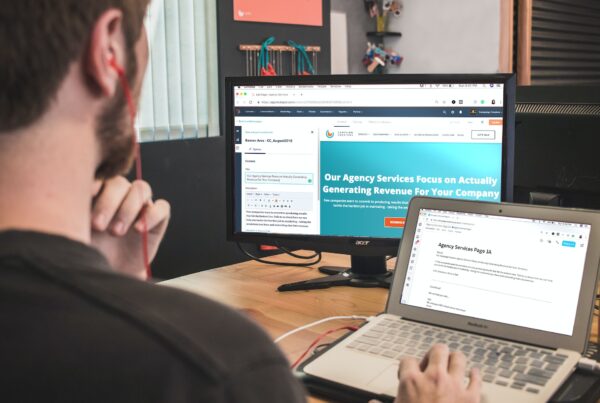
In today’s digital landscape, the internet plays an indispensable role in our daily lives, serving as an all-encompassing hub for information, communication, and entertainment. As the World Wide Web continues to evolve and expand, ensuring equitable access for every individual, regardless of their physical or cognitive abilities, has become a pressing concern.
Enter the realm of web accessibility, a crucial aspect of modern web design and development that focuses on incorporating inclusive features and practices to cater to the diverse needs of users, particularly those with disabilities.
In this guide, we delve into the top web accessibility features that every website should have, unraveling their importance in fostering a more inclusive and user-friendly digital environment to benefit the disabled population.
Join us as we explore the intersection of technology, empathy, and innovation in creating a more accessible and barrier-free internet for all!
Key Accessibility Features for an All-Exclusive Website Experience
1. Contrasting Color Combinations
Colors play a crucial role in web design, and using the right color combinations can make your website not only visually appealing, but also accessible for users with visual impairments, ensuring they can easily read the content. The WCAG recommends a minimum contrast ratio of 4.5:1 for normal text and 3:1 for large text. Using online tools like the WebAIM Color Contrast Checker can help you evaluate and choose appropriate color combinations for your site.
2. Using Plain English for Content
The language used on your website should be straightforward and easy to understand. Using plain English for your content not only makes it more accessible to users with cognitive disabilities but also benefits users who may not have English as their first language.
Some tips for using plain English in your content include:
- Avoiding jargon, technical terms, and acronyms;
- Using short sentences and paragraphs;
- Breaking up complex information into smaller, manageable chunks;
- Using bullet points and numbered lists for easy scanning.
Remember, the goal is to make your content easy to read and understand for all users, regardless of their language proficiency or cognitive abilities.
3. Adding Closed Captions on Video Content
Video content is becoming increasingly popular on websites, but it can be challenging for users who are deaf or hard of hearing to access. Adding closed captions to your video content ensures that these users can fully understand the information being presented.
Closed captions are text overlays that display the audio content of a video, including dialogue, sound effects, and music. These captions should be accurate, synchronized with the audio, and easy for users to turn on and off.
By providing closed captions, you not only improve accessibility for users with hearing impairments but also cater to users who may prefer to watch videos with the sound off, such as those in noisy environments or with limited data plans.
4. Integrating Keyboard-Only Navigation
Many users with motor impairments or visual disabilities rely on keyboard navigation to access and interact with websites. Ensuring that your website is fully navigable and functional using only a keyboard is crucial for accessibility.
Some key aspects of keyboard-only navigation include:
- Providing a logical and consistent tab order;
- Ensuring all interactive elements can be accessed and activated with the keyboard;
- Providing visible focus indicators to show users where they are on the page.
To improve keyboard navigation, consider testing your website using only your keyboard, and address any issues that may arise.
5. Logical Heading Structure for an Easy-to-Read Layout
A well-structured heading hierarchy is crucial for helping users navigate and understand your website’s content. Headings should be used to break up content into logical sections and provide a clear, hierarchical structure.
To achieve a logical heading structure:
- Use headings in a consistent and hierarchical manner (H1 for main headings, H2 for subheadings, etc.);
- Ensure that headings are descriptive and clearly indicate the content they are introducing;
- Avoid skipping heading levels or using headings purely for visual formatting.
A logical heading structure not only benefits users with screen readers but also makes it easier for all users to scan and understand your content.
The Bottom Line
Remember that web accessibility is not a one-time task, but an ongoing commitment to ensuring that your website remains accessible as it evolves and grows. By prioritizing accessibility, you’ll demonstrate your commitment to inclusivity, reach a broader audience, and improve your website’s overall functionality.
With AllAccessible, users can easily test websites for accessibility compliance. Our simple and intuitive interface makes it easy to identify and fix accessibility issues, whether you’re a beginner or an experienced web developer.
Our comprehensive set of tests covers a wide range of accessibility standards, ensuring websites meet the latest guidelines and regulations. Check out our accessibility tool for websites in New York today and start your FREE trial!


